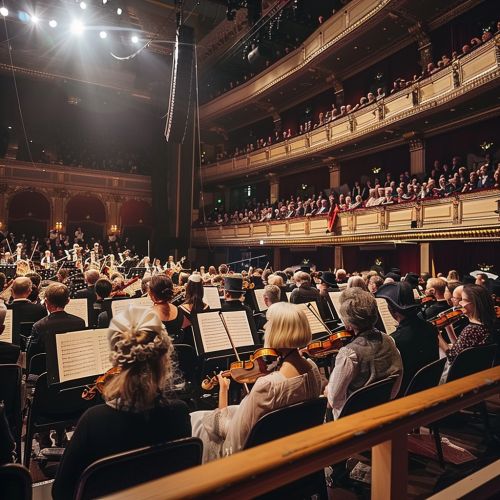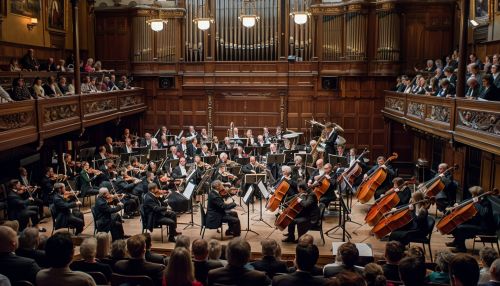London symphonies
Origins and Background
The term "London Symphonies" refers to a collection of twelve symphonies written by Franz Joseph Haydn. These works were composed during the latter part of Haydn's career, specifically between 1791 and 1795, during his two visits to London. Haydn, a prominent figure in the development of the Classical period in music, is often credited with the establishment of the symphonic form. His London Symphonies are considered some of his greatest works, showcasing his mature style and innovative compositional techniques.


Composition and Structure
Each of the London Symphonies follows the traditional four-movement structure common to the Classical period: a fast opening movement, a slow second movement, a minuet and trio, and a fast finale. However, Haydn's innovative approach to these conventions is evident in his manipulation of form and thematic material. He often employs techniques such as sonata form, theme and variations, and rondo form, among others, to create a rich tapestry of musical ideas.
Notable Symphonies
Among the twelve London Symphonies, several stand out for their unique characteristics and historical significance.
Symphony No. 94, "Surprise"
The "Surprise" Symphony is perhaps the most famous of the London Symphonies. Its nickname comes from the sudden fortissimo chord in the otherwise quiet second movement, which Haydn reportedly included to wake up any audience members who had fallen asleep.
Symphony No. 101, "The Clock"
The "Clock" Symphony gets its name from the ticking rhythm in the second movement, reminiscent of a clock. This symphony is a prime example of Haydn's ability to transform a simple rhythmic motif into a complex musical structure.
Symphony No. 104, "London"
The final symphony of the series, the "London" Symphony, is considered one of Haydn's greatest works. It showcases his mastery of orchestration, thematic development, and dramatic contrast.
Reception and Legacy
The London Symphonies were well received during Haydn's lifetime and continue to be popular in the modern orchestral repertoire. They represent the pinnacle of Haydn's symphonic output and have influenced generations of composers, including Beethoven and Mozart. The London Symphonies also played a significant role in establishing London as a major center for musical performance and composition during the late 18th century.
